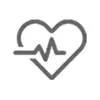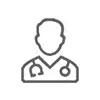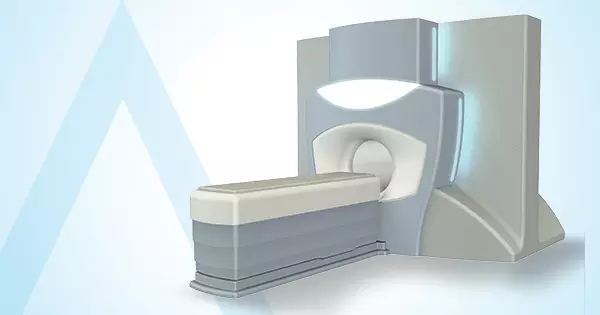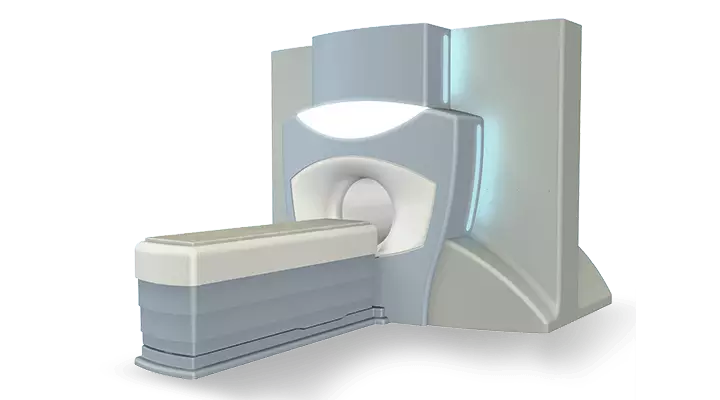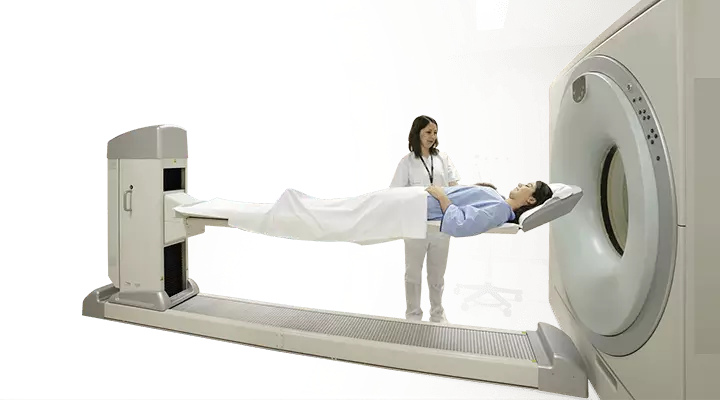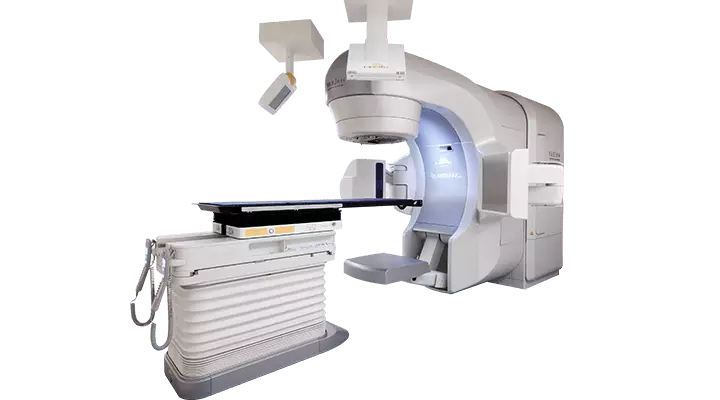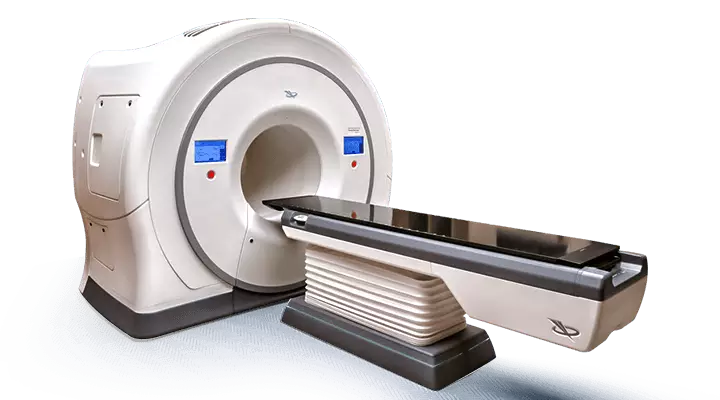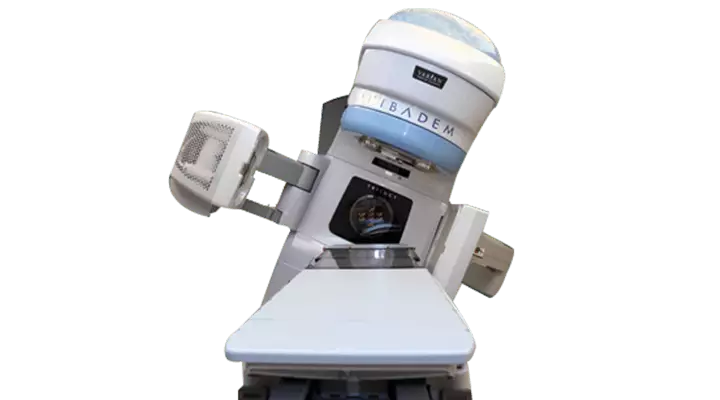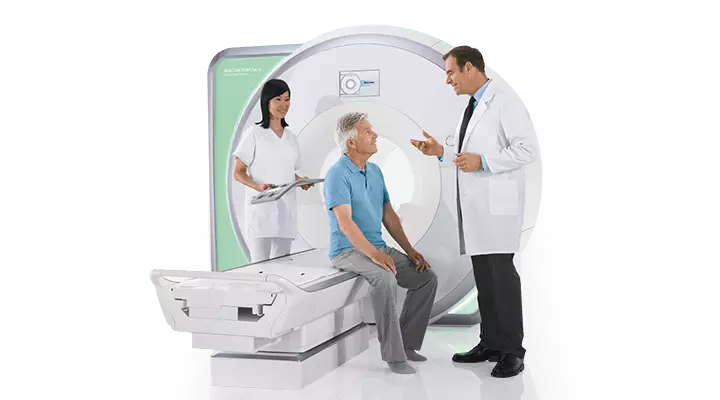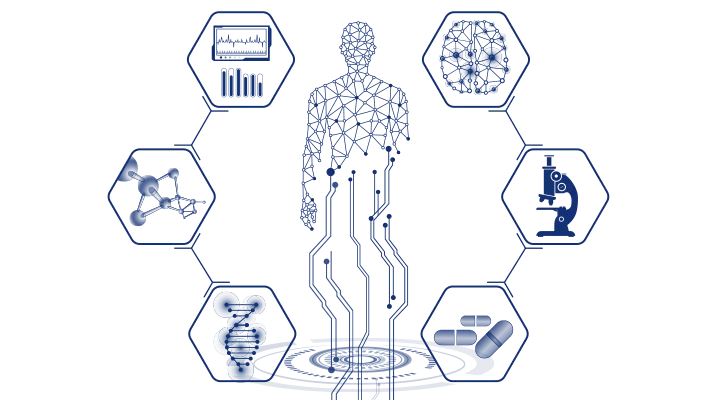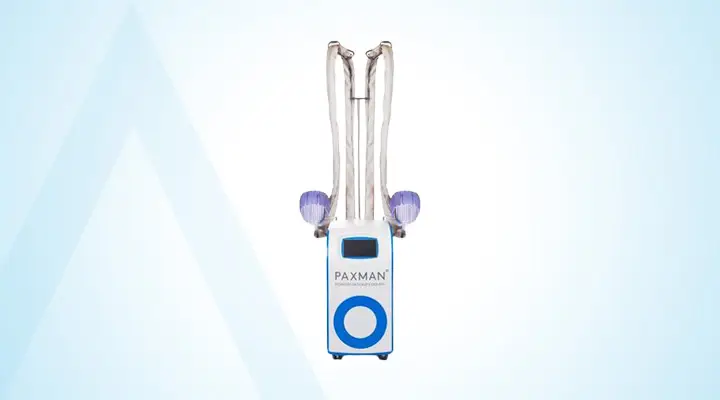Acıbadem Healthcare Group has all infrastructure and equipment required for diagnosis and treatment of cancer through a multidisciplinary approach that ensures involvement of many departments, including but not limited to oncologic surgery, psychiatry and physical medicine and rehabilitation along with medical oncology and radiation oncology departments.
Imaging devices that scan target body part quickly with low radiation dose are used to diagnose cancer, while high-tech radiosurgery devices are available for treatment.
Types of Cancer
Although incidence of cancers varies by geography, breast, lung and colon cancers are most common ones both worldwide and in Turkey.
Prevalent Cancers in Turkey
Incidence of all cancers is not equal in all countries, while the rates of certain cancers are similar in Turkey and European countries. For example, colocrectal cancers have become more prevalent in both men and women compared to stomach in Turkey, as is the case with other Western countries.
There is no significant difference in incidence of cancers between our regions and cities. However, it is revealed out that colorectal cancers are more prevalent than stomach cancer in both men and women.
Western diet and increased incidence of obesity appears linked to incidence of colorectal cancer. Considering regional incidences, stomach cancer is more prevalent than colorectal cancer in Central and Eastern Anatolian regions. Experts states that the variation may be due to eating pattern - spicy and salty food, diets rich in meat and low consumption of vegetables and fruits.
The most prevalent cancers in Turkish men are lung, prostate, urinary bladder, colorectal and stomach cancers, while they are breast, thyroid, colorectal, uterine and lung cancers in women.
Types of cancer include but are not limited to mouth cancer, colon cancer, liver cancer, urinary bladder cancer, endometrial cancer, lung cancer, bone tumors, stomach cancer, cervical cancer, brain tumors, colorectal cancers, pancreatic cancer, thyroid cancer, skin cancers (melanoma), lymph cancer (lymphoma), childhood cancers, ovarian cancer, throat (larynx) cancer, breast cancer and prostate cancer.
10 Types of Cancers Which Spread Quickly
Complete cure can be achieved, if cancer is diagnosed early. Certain cancers can spread very quickly, but advancements in both medical technology and medical community made great contributions to early diagnosis.
Pancreatic cancer, gall bladder cancer, stomach cancer, esophageal cancer, skin cancer, lung cancer, brain tumor, testicular tumor, sarcoma and colorectal cancers are among cancers that spread quickly.
Medical oncology, oncologic surgery and radiation oncology techniques are used for treatment of cancer.
Environmental factors are as important as genetic factors among the causes of cancer. Environmental factors include our lifestyle (smoking, alcohol consumption, eating pattern) and other factors such as air and environmental pollution.
While measures can be taken against some of these factors, others are unchangeable. Family history of cancer, genetic inheritance, certain ages and prevalence in men and women are amongst the unchangeable factors.
However, a healthy lifestyle may help prevention of certain cancers. For example, factors that affect health, such as smoking, alcohol consumption, healthy diet, regular exercise and obesity, should be controlled. Healthy eating, weight loss and healthy lifestyle may reduce risk of cancer by 30-35 percent.
In addition to lifestyle changes, it is necessary to be screened in early diagnosis programs, even if there is no sign of cancer or complaint. Early diagnosis screening such as mammography, prostate cancer screening and HPV test increases the success rate of treatment up to 90 percent in cancer.
Minor changes in your daily lifestyle can be a source of prevention against risk of cancer.
Sun Protection
Of course, sun rays have benefits for our body, but uncontrolled exposure to sun light is harmful. Therefore, try to avoid direct exposure to sunlight from 10:00 to 15:00 in summer and the same applies to your children.
Recurrent sunburns especially in childhood increases the risk of future skin cancer, called melanoma. Do not have long sunbathes in seaside or pool side and use sunscreens with high protection factor half an hour before the exposure to sunlight to protect your skin.
Be Aware of Effects
Our country is rich in terms of sunlight. In addition to benefits, ultraviolet (UV) lights reaching to surface of Earth have non-negligible harms for human beings.
It has played a role in initiation of all biological events in the world, enables synthesis of Vitamin D in our body, helps destruction of harmful microorganisms and has positive effects in human psychology and all our vital activities. In addition, UV light can cause acute and chronic side effects.
Skin burns, sunstroke and photo-allergic reactions are among acute effects. Chronic harmful effects are skin cancers, thinning of skin over time, loss of elasticity (wrinkles), dryness, prominent capillaries, skin spots, freckles, roughening, aging of skin and suppression of immune system.
These harmful effects have been discovered long time ago in clinical human and animal studies. These side effects also apply to artificial UV sources such as solarium. Since artificial UV rays can be generated in all seasons of the year and UV rays are delivered more intensely in a shorter period of time, solarium poses higher risk compared to sunrays.
Who Are At Risk of Skin Cancer?
Prevalence of skin cancer is very high for people who are exposed to sunlight for a long time or intermittently, but more intensely. Other risk groups for skin cancer are as follows:
- Risk of malignant melanoma is higher for people who have light skin tone, light eye color, red-yellow hair or who are prone to sunburn comparing to other people.
- The risk is very high for people who are exposed to sunlight for a long time or intermittently, but more intensely.
- People with family history of malignant melanoma are at twice higher risk comparing to general population.
- Risk also increases in people with abnormal dysplastic nevus syndrome.
People Working Outdoors Should Be Careful
People with light skin color are more sensitive to sunlight comparing to people with darker skin tone. This fact explains why skin cancers are 15 times more common among white race than black race. Moreover, risk of skin cancer is higher for people who work outdoors, such as farmers and sailors.
Sun Protection Is Necessary Both In Summer and Winter
UVA and UVB are within the spectrum of sunlight that reaches the earth. Certain factors increase or reduce the dose of these rays reaching to skin. These include certain hours of day, seasons, geographic regions, density of clouds, altitude and environments that reflect lights.
In our country, 60% of UV lights reach the surface from 11:00 to 15:00. UV rays have maximum effects on the equator, while the effect is minimized towards the poles. Clouds can block approximately 50 % of UV rays. Effects of UV increase in each 300-meter increment of altitude.
UV energy is higher especially in mountainous regions. Snow reflects the UVA by 50-95 percent, water by 5 percent, grass by 3 percent and sand by 5 percent. UVA rays are effective throughout the year without any change at different hours of day, different seasons or weather conditions. UVB rays have stronger effect in summer and at high altitudes. UVB can directly damage tissues, but UVB only harms through photoproducts.
It has been long considered that UVB rays were responsible for skin aging and cancer, but recent research revealed out that both UVA and UVB are responsible for these two conditions. Therefore, sun protection is necessary both in summer and winter. People with light skin tone and children younger than 3 are more vulnerable to adverse effects of sun rays.
Avoid Direct Sun Exposure
Darkening of skin color (sun tanning) is, in fact, a mechanism of body defense to protect human organism against harmful effects of sun.
In other words, when we are exposed to UV rays, our skin activates the defense mechanism, make pigment cells migrate to upper layers of skin and form a protective curtain on the skin.
Direct exposure to sunlight is not recommended. No matter how much a person tries to avoid sunlight, he/she is exposed to sun rays that are enough to meet needs for vital activities both in summer and winter. Therefore, extra sunbathing is not necessary.
Since the ozone layer of atmosphere that filters the sunlight, negative effects of sun rays are, now, stronger than ever. Brown spots caused by sun exposure become more likely due to genetic features, hormonal activities and some foods and drugs (some hormone drugs, oral contraceptives, certain antibiotics etc.)
Therefore, hormonal pattern, medications and eating pattern of the person should be reviewed, if development of brown spots boosts. Freckles are skin spots that are subject to genetic predisposition. However, sunlight aggravates them. There are some allergic reactions triggered by sun.
This phototoxic reaction is related to person’s allergic sensitivity. Moreover, chemical substances exposed from skin surface or taken from mouth can also trigger this reaction. In the light of this information, it is obvious that sun protection should be a part of lifestyle.
Which Sunscreens Should Be Preferred?
For daily use, sunscreen creams should be applied on exposed parts of body, face, ears, neck, décolleté and hands. Sunscreen products that provide protection against both UVA and UVB should be preferred.
Women should apply sunscreen before make-up in summer. Moisturizers that contain sun protection factors are not widely recommended, as the sun protection factors contained in moisturizers may not function properly. Instead, sunscreens that contain a moisturizer base should be preferred.
Moreover, you should wear hat and eyeglasses in summer. Light colored, protective clothes are recommended to avoid sun. Wearing hats with wide sides and sunglasses are very beneficial especially for people with light skin tone.
Be Careful Against These!
Have your skin checked regularly and ask for help of a family member, if necessary. Inspect your trunk, arms and legs, palms and soles on a monthly basis. Check your scalp and back with mirror.
To protect your skin, check the expiry dates of cosmetic products. Expiry dates are written on products so as to prevent damages to our skin after they spoil. If there is no expiry date on a product you buy, remember that their shelf life is 3 years. Note that this time shortens if they are stored in warm environments,
If hormone drugs, antibiotics, antihypertensive agents, cholesterol lowering drugs, medications used for diabetes mellitus and painkillers increase sun sensitivity, you should contact your doctor about potential measures that can be taken.
Cessation of Smoking
Smoking is one of the leading causes of many health problems, most remarkably cancer and heart and lung diseases. Five million people around the world and more than 100 thousand in Turkey - one in every 4 people – die due to tobacco use. It is estimated that the figure will be 240 thousand in 2030.
Smoking accounts for 35% of all cancer deaths in men and 15% in women. Smoking is the underlying cause in 90% of deaths secondary to lung cancer. Since lung cancer correlates directly with smoking, it is the leading cause of cancer deaths.
Smoking is also the pioneering cause of respiratory tract diseases that are manifested by shortness of breath (dyspnea) such as chronic bronchitis and emphysema. People who die due to these diseases are 40 times more than non-smokers. Smoking increases risk of cerebrovascular diseases and stroke through its effects on bloodstream and blood vessels and moreover, it can lead to gangrene in legs.
What are Diseases That Smoking Increases the Risk?
There is a direct correlation between nicotine addiction and several types of cancer. Smoking increases risk of throat, prostate, gingival, mouth, urinary bladder, esophageal, tongue, pancreatic, tonsil and cervical cancers, although the risk is more prominent for lung cancer.
Moreover, it causes other problems in both genders, including impotence, stroke, ulcer, chronic bronchitis, vascular diseases in legs and heart attack in men and infertility and COPD in women. Risk of lung cancer for smokers depends on the time since onset of smoking and number of cigarettes smoked per year. The risk is paramount for those who have been smoking for more than 20 years. The risk cannot be reduced to the level of those who has never smoked, if a person has been smoking for more than 20 years. On the other hand, each extra year of smoking increases the risk further.
What Changes in Our Body When Smoking is Quit?
- Blood pressure and pulse are normalized and blood circulation improves in hands and feet after 20 minutes.
- Blood oxygen saturation is normalized and risk of heart attack decreases after 8 hours.
- Carbon monoxide completely leaves the body after 24 hours.
- Nicotine level in blood decreases, sense of smell and taste normalizes, response to treatment of peptic ulcer improves after 48 hours.
- Breathing becomes easier thanks to relaxation of airways, amount of secretion increases secondary to better functioning in airways 72 hours later; airways start cleansing themselves. The person becomes more energetic.
- Blood circulation improves in whole body, risk of respiratory tract infections decreases and exercise capacity increases after 2 to 12 weeks.
- Respiratory tract problems, such as cough, short breaths and wheezing, disappear and respiratory functions increase by 5 to 10 percent after 3 to 9 months.
- Risk of coronary heart diseases decreases by half 12 months later.
- Risk of bladder tumor decreases by 50 percent 12-36 months later.
- Risk of heart attack and esophageal and mouth cavity cancers decreases by 50 percent 5 years later.
- Risk of heart attack is reduced to the level of those who has never smoked and risk of lung cancer decreases by 50 percent compared to smokers 10 to 15 years later.
- Quitting smoking also has positive effect on social life.
Besides improved overall health, quitting smoking also has positive effects on social life. First, sense of taste from food and sense of smell improve. Constant financial burden of smoking is eliminated.
The air inhaled in close spaces, such as home and car, becomes cleaner. Negative effects of smoking on babies and children are eliminated. Quitting smoking affects sex life positively. In addition, symptoms of withdrawal and anxiety caused by the addiction disappear and the person feels physically more energetic.
Novel Treatment Modalities to Quit Smoking
Being decisive and strong-minded in the first step that should be taken to quit smoking. However, one may need help while liberating from a long-term addiction. There are several treatment options to quit smoking. They include but are not limited to medication and replacement treatments.
Medication Treatment
Quitting smoking is more difficult for certain people due to genetic predisposition that adds to the addiction. The medication represses sensation of urge to smoke. These medications can be prescribed for people who have difficulty quitting smoking.
Replacement Therapies
Nicotine is supplemented by nicotine patches. There are also nicotine gums and even nicotine sprays. There are mentholated smoking mouthpieces as well. However, nicotine patches has to be replaced daily and removed at nights.
These patches come in various doses. Higher dose is prescribed, if addiction is severe. This method can also be combined with medication therapy. Combined treatments are recommended for efficiency. Medication, nicotine patches and nicotine chewing gums can be used in combination for people who experience difficulty quitting smoking. However, these treatments should be supervised by a physician. Otherwise, unsupervised use of the methods can affect your health adversely.
Nutrition
Studies suggest a link between nutrition and cancer. Nutrients may have both negative and positive effects. Hazardous substances may develop in nutrients, which can contain both anticancerous and precancerous substances due to cooking and storage conditions.
Some nutrients can prevent cancerous effects of harmful chemical substances, if they are cooked properly. Toxic chemicals, which cause cellular damage that leads to cancer, are called oxidants or oxidizing agents. Some nutrients or leaves, flowers, fruits, corms, and seeds of certain plants contain beneficial chemicals which protect cells against oxidizing agents. These are called antioxidants.
Cancer can be prevented by paying attention to eating pattern and avoiding tobacco products. Because nutrition is one of the primary reasons behind various cancers such as stomach, colorectal, liver, pancreas, kidney and prostate cancers.
Eating Pattern to Prevent Cancer
It is, first, necessary to strengthen the immune system and avoid foods and habits that may cause cancer in order to prevent cancer. Items of four food groups should be introduced to meals to prevent cancer.
Making a room for bread group, meat group, diary group and fruit-vegetable group in daily diet or in other words, regular and correct eating pattern is crucial in prevention of cancer. Mediterranean diet should be preferred to consume fruits, vegetables and olive oil abundantly, but it is also necessary to avoid saturated fats.
Specialists emphasize the need for introduction of antioxidative nutrients (legume, all vegetables and fruits, whole-grain group, fish and olive oil) into the daily diet.
Eating Rules to Prevent Cancer
Annually, 13 million new cancer cases are diagnosed worldwide, while the figure is 150 thousand in Turkey. Studies on cancer cases with exponential annual increase demonstrate that wrong diets may lead to cancer. Then, how are we supposed to eat and what are key points to prevent cancer?
Here are itemized rules of a healthy diet
Say Farewell to Excessive Weight
Obesity is a disease which may lead to cancer. Therefore, lose your excessive weight. Follow an appropriate diet program and increase your physical activities. Seek professional support from your dietitian and physician if you cannot manage your body weight.
Eat Foods from All Nutrient Groups
Risk of cancer is higher in individuals who have a mono diet. Therefore, make a room for all food groups in your table. (Meat, egg and legume, milk and dairy products, vegetable and fruit group, fat and oil group)
Decrease Fat Consumption
Cook your foods with oils or use low amounts of fat. Consume foods rich in fat such as buttermilk, cream and mayonnaise, and fried foods in low amounts. Do not consume foods which contain trans fatty acids such as margarine, French fries, deep fried foods to prevent cancer.
Add Unburned Fats to Your Food
Prefer certain cooking methods, such as boiling, roasting and poaching, and add oil on the cooked meal. Do not forget that deep fried and barbecued foods have cancerous substances.
Eat Fish 3 Times a Week for Omega 3
Consume poached or roasted fish products twice or thrice a week to gain protective effects of Omega 3 fatty acids. Your diet should necessarily contain seeds that contain this fatty acid, such as soy and canola oil, soy bean, flaxseed, hazelnut and walnut, and portulaca.
Prefer Low-Fat Meat and Skimmed Yoghurt
Full-fat milk, yoghurt, cheese and meats contain high amount of saturated fat. Prefer low-fat alternatives of these products to prevent cancer. You should always remember that high fat consumption increases the risk of lung, rectum, breast and prostate cancers.
Do Not Be Deceived By Taste
Eat low-fat meat twice a week. Avoid the skin of chicken and turkey meat, as it is very rich in fat. Limit consumption of processed meat products which contain high amounts of fat and preservatives, such as bologna sausage, salami, sausage and pastrami, to avoid cancer.
Milk is Preventive for Cancer
You diet should necessarily contain milk and dairy that are rich in calcium, phosphorus, Group B vitamins and that are especially protective against colorectal cancers. Consume 2 to 3 glasses of semi-skimmed milk and yoghurt to prevent cancer.
Do You Drink Kefir?
Kefir, probiotic milk and yoghurt contain bacteria that are good for your health and strengthen your immune system. You may drink 1 glass of these anti-cancerous products every day.
Eat More Oats!
Eat 6 or more servings of nutrients from the grain group every day. Whole-wheat bread, grains and legume which have higher nutritional value should be preferred over processed white flour, white bread and rice.
Do not dispose boiling water of legume, pasta and vegetables to minimize loss of nutrients and vitamins in order to prevent cancer.
How Many Servings of Fruit You Eat?
Do you know that risk of cancer is two times higher in people with low fruit and vegetable intake? Fruit consumption is especially protective against lung, esophagus, mouth cavity, pancreas, stomach, colon, rectum, urinary bladder and larynx cancers. Eat 2 to 4 servings of raw vegetables, salads and vegetable meals and 3-4 servings of fruit to prevent cancer.
Reduce Sugar Intake
Do you know that risk of cancer is two times higher in people with low fruit and vegetable intake? Fruit consumption is especially protective against lung, esophagus, mouth cavity, pancreas, stomach, colon, rectum, urinary bladder and larynx cancers. Eat 2 to 4 servings of raw vegetables, salads and vegetable meals and 3-4 servings of fruit to prevent cancer.
Too Much Salt Intake Is A Risk Factor For Stomach Cancer
Consuming salt too much and eating salty foods increase risk of stomach cancer. Avoid eating too salty foods often, such as brine and pickle.
You can decrease salt intake by adding spices like thyme, mint, red pepper, onion, garlic and parsley to your foods while cooking. Prefer freezing the foods for storage instead of salting.
Do Not Eat Blue Cheeses!
Grains, flour, dry legumes and oily seeds, such as walnut, hazelnut and peanut, as well as spices may get moldy and toxins may develop, when they are stored in humid areas: Amongst these toxins, aflatoxin is especially a risk factor for liver cancer. Store these foods in dry and cool places. Avoid eating blue cheeses to prevent cancer.
Drink 2 Liters of Water A Day
Consume 1.5-2 liters of water and fluids every day as a preventive measure for cancer. The fluids you drink may be water, fruit juice, tea, herbal tea (linden, sage, green tea, rose hip etc.), compote and stewed fruits as well as ayran (buttermilk).
Avoid Alcoholic Beverages
Consume 1.5-2 liters of water and fluids every day as a preventive measure for cancer. The fluids you drink may be water, fruit juice, tea, herbal tea (linden, sage, green tea, rose hip etc.), compote and stewed fruits as well as ayran (buttermilk).
Sports
It is, now, known that regular exercise not only ensure weight control, but it also strengthens the immune system and most importantly, reduces the risk of cancer. It is important to do jogging for at least 30 to 40 minutes a day by wearing training shoes, such that your heart rate increases. Intense exercises at least 1-2 day(s) a week is good for health.
Nowadays, obesity is health problem for a major part of general population, including childhood; in other words, overweight is a risk factor especially for breast, ovarian, endometrial and colon cancers. Regular exercise normalizes body weight, but it is also preventive for development of cancer.
You Can Exercise Everywhere!
Even ‘light activities’, such as cleaning the house, yard work, playing with children and grandchildren and walking your dog, are good for health. Physical activity is a must for all age ranges. Childhood requires more intense and heavier physical activities than adulthood and advanced ages. Exercise and sports should be done two to three hours after meals.
A Pair of Shoes and a Safe Route Are Sufficient!
We should increase our mobility and physical activity for healthy aging. For this purpose, we need nothing except a pair of shoes and a safe route to walk. Unfortunately, our roads are not safe enough; but it is beneficial not to miss the chance if you find an appropriate route.
The main target is 10 thousand steps a day. Your targets should be realistic while doing sports; otherwise, the potential benefit can turn into damage and may even cause death. It is acknowledged that a health check-up is wise before one starts doing sports.
- Prefer public transportation while going to work.
- If you are driving to work, park your vehicle a little far from your workplace and walk.
- Use stairs several times a day in office.
- Use stairs instead of elevator.
- Spend your holidays outdoors rather than indoors and move.
- Do not bend forwards while sitting, stand and walk upright.
Some Practical Home Exercises
Push-up
This exercise can be done on door/wall and on your knees or toes on floor. Open your hands approximately to shoulder width and put them on floor or wall/door. In this position, bend your elbows and move your body towards floor/wall/door. Thus, you can train muscles of your arm and trunk.
Sit-up
Lie on floor while your knees and hips are slightly bended. While lying in this position, lift your body from the floor by 30-45 degrees and wait for 5 seconds. This exercise strengthens abdominal muscles.
Reverse Sit-up
Lie on floor facedown and place your hands on sides. While lying in this position, try to lift your head and body from floor and wait for 5 seconds. This exercise strengthens back muscles.
Sitting Down- Standing Up Using Couch / Chair
Sit down on couch/chair by crossing your arms in front of your chest wall. While sitting in this position, stand up from chair and sit again; repeat the move. You can decrease the height of chair/couch to make this exercise more challenging. This exercise strengthens leg and hip muscles.
Ascending and Descending Stairs
This is indeed a physical activity; but you can do this with a higher pace as an exercise.
4-Step Exercise at Workplace
- Go next to a door or corner of room. Elevate your arms up to shoulder level, turn your face towards corner/wall, bend your elbows and put them onto door/corner and lean your body forward. Stay in this position for 30 to 45 seconds and repeat it 4 to 5 times.
- Use one hand to bend your head sideways and put other hand towards your low-back from behind while your elbow is flexed. Stay in this position for 30 to 45 seconds and repeat it 4 to 5 times.
- Place your hands on your low-back. Try to approximate your elbows behind without taking off your hands from low-back. Stay in this position for 5 seconds and repeat it 20 to 30 times.
- Try to stand upright while your hands are at sides and move your shoulders upwards and backwards in this position. Stay in this position for 5 seconds and repeat it 20 to 30 times.
Common Reason of Diseases; Sedentary Lifestyle!
Physical immobility is the 4th most common risk factor that causes death worldwide, while it is also one of the main causes of obesity – a condition regarded as epidemic of modern era.
Today, it has been proven that drugs are not solely sufficient for treatment of many diseases such as diabetes mellitus, cardiovascular diseases, arthritis, osteoporosis, hypertension and hyperlipidemia (increased fat level in blood).
Regardless of drugs you use, you cannot take your diseases under control without exercise. Here is a list of diseases caused by physical immobility,
- Diabetes
- Obesity
- Hypertension
- Cardiovascular Diseases
- Diseases of musculoskeletal system
- Certain cancers
- Respiratory tract diseases
What Are Common Symptoms of Cancer?
Bleeding
Blood in saliva or sputum can be a symptom of lung cancer as well as cancers of upper respiratory tract. One should always remember that bleeding can also be caused by irritation in throat, lung infection and gingival problems. Therefore, one should present to pulmonary medicine and otorhinolaryngology departments in case of bleeding in mouth.
Since rectal bleeding may point to colorectal cancers, it is essential to visit a gastroenterologist. However, blood in stool may also be a sign of other health problems, such as food poisoning or Crohn’s disease and Ulcerative Colitis.
Blood in urine (hematuria) is among symptoms of cancers that involve kidney, urinary bladder and urinary tract. Urology examination is required for final diagnosis.
Endometrial cancer is usually detected after 40 years of age and it can be manifested by heavy menstrual bleeding and bleeding in between menstrual cycles. One should visit a gynecologist in case of bleeding in menopausal period.
Cervical cancers may be asymptomatic at early stages and therefore, PAP screening at regular intervals is required. Symptoms of advanced stage cervical cancer include but are not limited to malodorous vaginal discharge, bleeding especially during and after sexual intercourse, painful urination (dysuria), low back pain, leg pain and severe inguinal pain.
Nasal and gingival bleeding and persistent small punctuate bleeding in children and adults may be a sign of leukemia. Please click to see other symptoms of leukemia.
Nosebleeds are fairly common, but only a small portion of the bleeding is related to tumors. Recurrent nasal bleeding may point to vascular tumors in postnasal region, especially in boys in adolescence. Moreover, unilateral recurrent nasal bleeding may be alarming for tumors that begin in nose or paranasal sinuses in adults.
Pain
Numerous factors may cause pain, which is a common symptom in the body. Shoulder or chest pain may be a sign of lung cancer. People with aforementioned pain should present to a pulmonary medicine doctor.
Patients with bone tumor usually visit a doctor with complaint of pain that is provoked by activity in initial phases, but also occur at rest over time.
The precursor symptoms of tumors that involve gastrointestinal system, such as bile ducts, stomach, small intestine and colon, are lack of appetite and weight loss that are accompanied by abdominal pain. One should absolutely visit a gastroenterologist in such cases.
Pain can be a sign of breast, prostate, ovarian and colorectal cancers. Although isolated breast pain is rarely a sign of cancer, it is necessary to visit a doctor to identify the underlying cause, if the pain is accompanied by a palpable lump, breast pain persists after menstrual cycle and it is constantly felt at same part of breast.
While prostate cancer doesn’t cause any symptoms in early stages, low back and back pain can rarely be the initial symptom in advanced stage, but bone ache is also likely. Ovarian cancer may be manifested by inguinal and abdominal pain. Sometimes, colic abdominal pain and distention may be the alarming sign of colon cancer.
Since brain tumors are located in the skull, they may cause common complaints such as severe headache, nausea and vomiting due to increased intracranial pressure.
Early-stage liver cancer is usually asymptomatic and a pain develops that is localized at the right side of abdomen, when size of the lesion increases. At advanced stage, severe abdominal pain is accompanied by weight loss and abdominal distension.
Laryngeal cancer causes hoarseness as well as sensation of a lump in throat and pain radiating to throat and ears.
Advanced-stage pancreatic cancers are manifested by severe abdominal pain, back ache, jaundice, weight loss and abdominal distention.
Swelling
Swelling in certain parts of body is among important symptoms of cancer. Bone and soft tissue tumors may be manifested by swelling. If this complaint is recognized, it is necessary to visit an orthopedist.
Swollen lymph nodes in neck, armpits and groin may be due to lymphoma. Enlargement of lymph nodes due to cancer or lymphoma generally does not cause pain; since swelling adheres to a body part, patient may experience difficulty moving limbs. In this case, one should present to oncology or hematology departments.
A gradually enlarging swelling in bones immediately beneath the skin may be an early symptom of tumors that involve tibia or ribs.
Thyroid cancers are usually manifested by a lump in neck or a nodule in thyroid gland. But not all lumps are cancer.
Unexplained weight loss
Unexplained weight loss (approximately 5 kg) can be the initial symptom of certain cancers like pancreatic, stomach, laryngeal, esophageal cancer or lung cancer. Doctors assess the weight loss along with other symptoms.
Fatigue
Long-lasting fatigue despite resting can be a symptom of leukemia. Fatigue due to blood loss can be seen in colorectal and stomach cancers.
Fatigue may be secondary to anemia or fibromyalgia, but it may also be a sign of lung, liver and kidney diseases. Stress may also lead to chronic fatigue syndrome.
Fever
Fever usually occurs only at advanced stages of cancer. On the other hand, long-standing or often fever may be an early alarming sign of blood cancers, such as leukemia, or lymphoma.
Change in urination or bowel habits
Painful urination (dysuria), blood in urine (hematuria) and voiding at longer or shorter intervals may be symptoms of urinary bladder tumor or prostate cancer. Therefore, these complaints necessitate a doctor visit. Persistent constipation, diarrhea or change in volume of stool may be a sign of colon cancer.
Skin changes
Changes in shape or color of moles, warts and freckles at any part of body, non-healing crusted lesions or quickly enlarging dark skin lesions can point to a future skin cancer. Changes in moles necessitate a doctor visit and it is very important regular follow-up with dermatoscopy for early diagnosis of melanoma.
Cough
Conversion of cough and secretion into a chronic form and gradually worsening shortness of breath (dyspnea) can be symptoms of lung cancer.
Changes in and around the mouth
White or red spots and sores in lips and mouth cavity are regarded as signs of mouth cancer. Persistent sores in mouth cavity and lips and loss of tooth without any clear cause may be alarming signs of mouth cancers.
Treatment Methods of Cancer
Although studies are on the way for curative treatment and remedy of cancer, it is, now, among treatable diseases thank to improvements in early diagnosis and treatment. Moreover, disease can be managed for the long term, if the condition cannot be treated or the cancer is at advanced stage.
Recently, targeted molecular treatment and immunotherapy are also used to treat cancer. Treatment of cancer is dictated by type and stage of cancer as well as genetic characteristics of cancerous cells.
Which Methods Are Used In Treatment of Cancer?
Fundamental methods used in treatment of cancer are oncologic surgery, medical oncology and radiation oncology.
Oncologic Surgery
Surgery is one of the most important treatment modalities in cancer. Oncologic surgery not only plays a role in the surgical treatment of the cancerous area, but it also has an important share in other areas of the diagnosis and treatment. Oncologic surgery practices are carried out by general surgeons who are educated in this field.
Fields of Use of Surgical Treatment
Curative surgery can be performed in the field of Oncologic Surgery. However, prerequisite of a curative surgery is a tumor that is confined to the origin organ or lymph nodes.
For such patients, there should be no distant metastasis and there should be no tumor on safety margins of surgical resection piece. Tumor can be totally excised after the margins are clearly determined.
However, there are also conditions that hinder complete removal of a tumor. In such cases, debulking surgeries may be performed to reduce size of tumor. Moreover, excision of a few metastases implies higher chance of recovery for the patient.
Oncologic surgery can also be used for palliative therapy. Certain treatments help alleviation of symptoms or increase quality of life. Surgical procedures may also be used for other aspects of diagnosis and treatment. These aspects are addressed under 4 topics:
Prophylactic Surgery
This term implies surgical removal of a tissue that is at risk for development of cancer. Intestinal polyps, skin lesions and certain changes in breast tissues pose risk of cancer and they can be treated with prophylactic surgery.
Biopsy
Biopsy implies getting a piece of tissue using certain tools with a surgical approach and histopathological examination of the piece. Final diagnosis can be established in the light of biopsy results.
Staging
The term implies obtaining tissue specimens from certain targets to identify the spread of disease.
Adjuvant
It means protective treatment that is started after the disease is staged.
Medical Oncology
Medical Oncology deals not only with treatment of patients with cancer, but it also covers cancer prevention, cancer screening and early diagnosis.
What is Medical Oncology?
Medical Oncology is a medical department that deals not only with treatment of patients with cancer, but it also covers cancer prevention, cancer screening and early diagnosis. In other words, medical oncology deals with all aspects of cancer. Moreover, the department cooperates with surgery and radiology departments for diagnosis and treatment of cancer in order to plan a multidisciplinary approach in the light of the scientific data.
What types of treatments are available?
Treatment covers medicines that are injected into blood vessels or given by mouth. However, actual treatment varies by type of the cancer. Treatment is planned in line with histological type of cancer, origin organ and the range of metastasis.
Adjuvant therapy aims reduction of relapse risk, while neoadjuvant therapy makes the tumor ready for operation or protects an organ and palliative treatment intends to prolong the life time and increase the quality of life in advanced stage diseases. These treatments can be used alone or in combination.
Which Methods Are Used in Medical Oncology?
Chemotherapy (medication treatment)
Chemotherapy aims to destroy cancerous cells that grow uncontrollably due to certain genetic changes. In most cases, several medicines are combined due to unique action of mechanism to kill cancer cells.
Drugs were first used in early 20th century for cancer chemotherapy. While Mustard gas was used in the First and Second World Wars, it was discovered that the gas reduced white blood cell counts and therefore, it was considered that it would have same effect on quickly dividing and growing cancer cells.
It was intravenously administered in 1940s to treat lymphomas and it was a successful therapeutic step in the circumstances of those days. This development paved the way for investigation of other substances that may be effective in anti-cancer treatment. Today, numerous chemotherapeutic agents are developed.
Hormone Therapy
Hormonal medicines are used to manage hormone-sensitive tumors, such as prostate and breast cancers. These drugs are usually given by mouth.
Another administration route is injection.
Immunotherapy
The substances that are naturally synthesized by the immune system are used to identify and kill cancer cells by stimulating the immune system of the body.
Targeted Biological Therapy
Biological therapies are guided to certain targets that are carried by cancer cells, but are not found in healthy cells and these therapies are deemed the most important advancement of the last decade in treatment of cancers. Targeted therapies are used in various types of cancers, especially including breast cancer, colon cancer and renal cell tumors.
Which Types of Cancers Are Treated By Medical Oncology?
Medical oncology modalities treat certain cancers: breast cancer; lung cancer; gastrointestinal cancers; pancreatic cancers; liver cancers; gall bladder and bile duct tumors; head and neck tumors; osteosarcoma and soft tissue sarcomas; brain tumors; kidney and urinary bladder tumors; prostate cancer; malignant melanoma; thyroid cancer; ovarian cancer; cervical cancer; endometrial cancer; testicular cancer; lymphomas; and multiple myeloma.
Radiation Oncology
Radiation oncology is the branch of science that deals with effects of radiation on cancer by using ionizing radiation and behaviors of tumor and that conducts studies and practices in this field. Radiation oncology consists of 2 fields of practice, namely radiotherapy and radiosurgery.
What is Radiotherapy?
Radiotherapy is defined as treatment of cancerous tissue and some benign tumors using radiation. Therefore, it is colloquially called “radiation therapy” or “X-ray therapy”.
X-ray beams are used to prevent growth of cancerous cells or to kill them at the locus of treatment. Radiotherapy is a commonly used treatment modality of cancer. In fact, radiotherapy may be required at least once in 60-80 percent of cancer patients, after diagnosis is made.
How is the treatment technique selected?
There are many factors that influence selection of the treatment method. Most important ones are patient’s age, overall health status, type of cancer, extent of metastasis and the location.
Treatment-related decisions are personally made for each patient after the evaluations are performed by multiple doctors from various departments. Therefore, customized therapy is planned for each patient even if they have the same type of cancer.
Who is included in the therapy team?
Radiation Oncologist: A physician who decides how much radiotherapy will be applied to which part of the body. This physician is responsible for following up the patient throughout the therapy, modifying the treatment depending on alterations in tumor and evaluating and managing side effects.
Radiation physicist: This person is responsible for planning therapy and coordinating quality, safety and technical service and maintenance of devices. S/he works in collaboration with radiation oncologist in therapy planning and application.
Radiotherapy technicians: These people are trained to use radiotherapy devices. They do not stay with the patient in the same room during therapy; however, they are continuously in communication with the patient through a monitor found in the control room. They are responsible for positioning the patient correctly, operating the device and acquiring images for real time controls during therapy.
Oncology nurse: S/he is a member of the team who stays most close to the patient, along with radiation oncologist, during treatment and follow-up of the patient. They act like a bridge between the physician and the patient to manage issues such as side effects and “Do’s and Don’ts”.
Secretariat: They are responsible for guiding patient correctly, arranging appointments, creating and saving medical files, informing patient about treatment expenses and performing procedures required by health insurance coverage of the patient.
How does Radiotherapy Exert Effects?
The beams used in radiotherapy influence the DNA inside the nucleus of tumor cells. These cells lose their ability to divide and grow when the DNA in the nucleus is sufficiently damaged. Since the destructed cells in cancerous tissue cannot reproduce, growth of cancer is ceased and size of the tumor is reduced; in conclusion, numerous types of tumors can be cured.
High-dose radiation in a radiotherapy session either destroys the cells or hinders division. As the tumor cells divide faster than most of the healthy cells, radiotherapy destroys these cells at higher rates. Although radiotherapy affects healthy cells in a certain extent, they can survive using special repair mechanisms which are not present in tumor cells.
On the other hand, number of normal cells at the target area is millions of times more than cancerous cells. Doctors extend the total duration of treatment by prescribing lower daily radiation dose in order to conserve healthy cells. Moreover, they pay attention to preserve healthy tissues at maximum extent and focus the radiation on diseased area.
Radiosurgery
Fundamental purpose of radiosurgery - an application field of radiation oncology - is creating changes in the diseased tissue by directing and focusing multiple low-energy beams towards the diseased area, resulting in delivery of high energy to the target zone.
This way, it is ensured that the cancer cells are reduced or destroyed in response to intensive beams delivered to the diseased area while nearby healthy tissues are protected against hazardous effects of radiation.
Radiosurgery Applications
STEREOTACTIC RADIOSURGERY (SRS)
SRS implies treating a target using certain coordinates; high-dose radiation destroys the tumor completely in a single session, after coordinates are determined on three dimensional images. IGRT is critically important regarding actual destruction of the target in this procedure.
STEREOTACTIC RADIOTHERAPY (SRT)
SRT implies a treatment characterized by SRS given in more than one session, usually in 3 to 5 sessions.
Medical devices such as MR-LINAC, Gamma Knife, TrueBeam, Tomotherapy, CyberKnife, Trilogy and Intra-operative Radiotherapy are used in Radiation Oncology Departments of Acıbadem Oncology Centers.
Cancer has become a serious and widespread health problem with ever increasing incidence that is still fatal despite medical advancements. On the other hands, good news about fighting the cancer is increased awareness on early diagnosis and improvement of tests that allow early diagnosis.
People at risk of cancer due to genetic predisposition, family history and lifestyle factors should be screened regularly.
Response to treatment of the cancer is directly correlated with the extent of spread. Early-stage diseases can be cured by 80 to 90 percent, while the reported figure is 40-50% for advanced stage cases.




